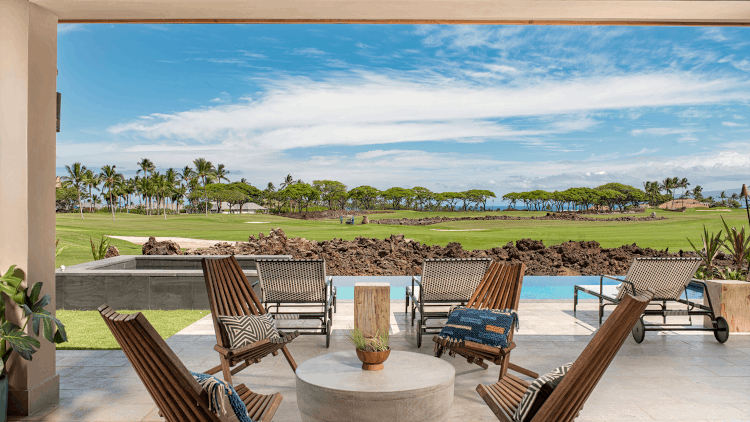Equity Residences launched its first luxury vacation home investment fund, the Equity Villa Fund, in 2012. Now it’s launching the first-ever vacation home fund compatible with “like kind” 1031 exchanges - the Mauna Lani Residence Fund.
Greg Salley, managing director of Equity Residences, stated, “Investors have been asking us for a fund that accommodates 1031 exchanges and eliminates the management responsibility they typically have with the properties they are buying.”

For a $355,000 investment, investors receive a 1/10th interest in a luxury vacation home on the Big Island of Hawaii. This large 4,100-sq.-ft., four-bedroom residence boasts a private, heated pool and jetted spa. It is located on Mauna Lani Resort’s famous Francis I’i Brown Golf Course within the private, gated Laule’a community. Mauna Lani Residence Fund investors have access to the private Mauna Lani Beach Club and other Mauna Lani golf courses and amenities. Each investor enjoys a minimum of five weeks of lodging every year. If investors prefer less personal use, they can make weeks available for rental to generate income.
Steve Dering, an Equity Residences director, noted, “Hawaii is a unique, year-round destination that is always in demand. Investors can utilize tax-deferred funds created by a 1031 exchange and benefit from appreciation over the 12-year life of the fund.”
Investors selling second-home real estate who wish to use a 1031 exchange must buy “like kind” property. For most people selling a rental home, this means buying a fee simple interest in another rental home. However, there is another vehicle that can qualify for a 1031 exchange. Investors can purchase properties through a Delaware Statutory Trust (DST) .
Investors acquire an interest in the DST that owns the real estate. The net effect is like buying real estate directly. DSTs must be structured properly to meet the IRS requirements set out in Revenue Ruling 2004-86. Each owner has a beneficial interest in a DST that owns one or more properties.
One of the advantages of a DST is that investors can purchase an interest in larger assets which they could not buy on their own. DSTs also make it easier to diversify by purchasing interests in multiple DSTs or a DST that owns multiple real estate assets. The Mauna Lani Residence Fund allows investors to avoid management responsibilities since Equity Residences manages all aspect of the home ownership.
Investors can also use a DST to deploy a small balance of exchange-eligible funds remaining after a replacement property acquisition. For example, if you sell a property for $1,500,000 and buy a property for $1,150,000 it may be difficult to find another eligible property for $350,000. However, you may be able to acquire a DST interest for $350,000 and defer all the gain.
Equity Residences now has three funds that are open to new investors. The Equity Platinum Fund will acquire up to 25 residences valued at around $2m to $2.5m. The Mammoth Residence Fund is buying two homes in a duplex near Mammoth Mountain’s Eagle Lodge in Southern California.















